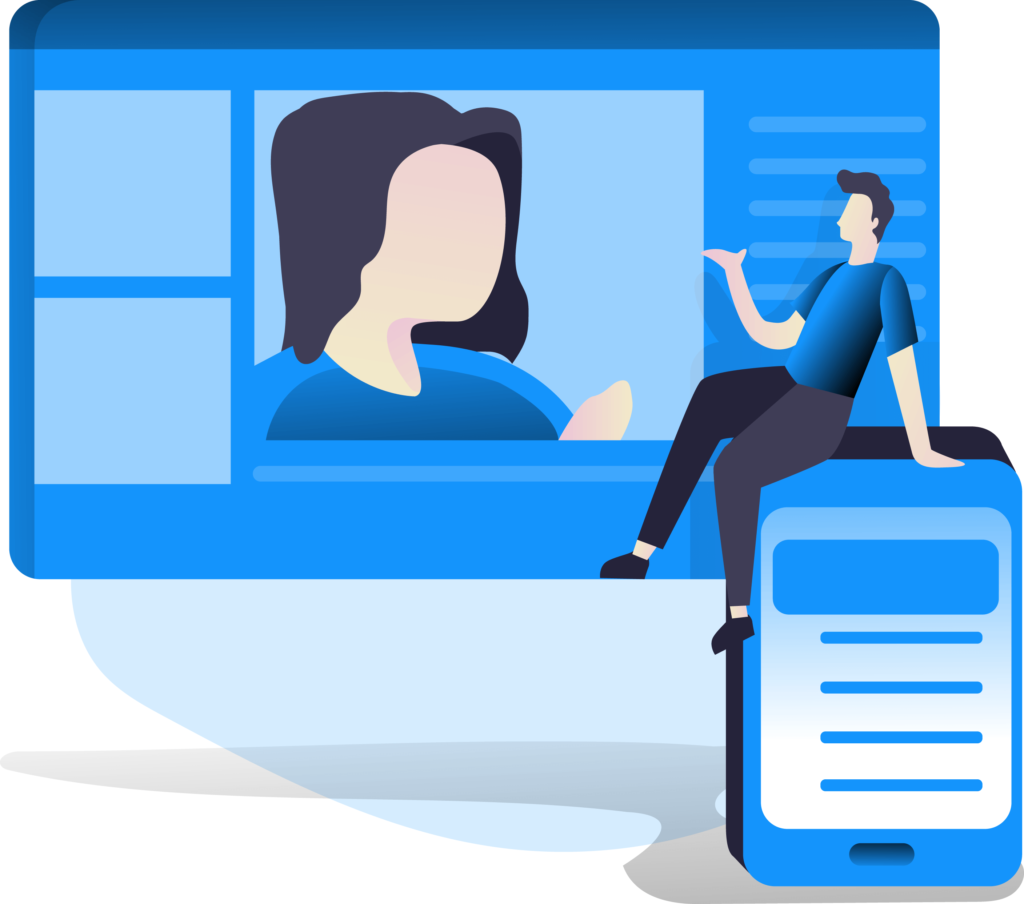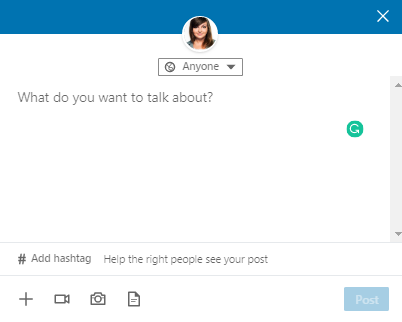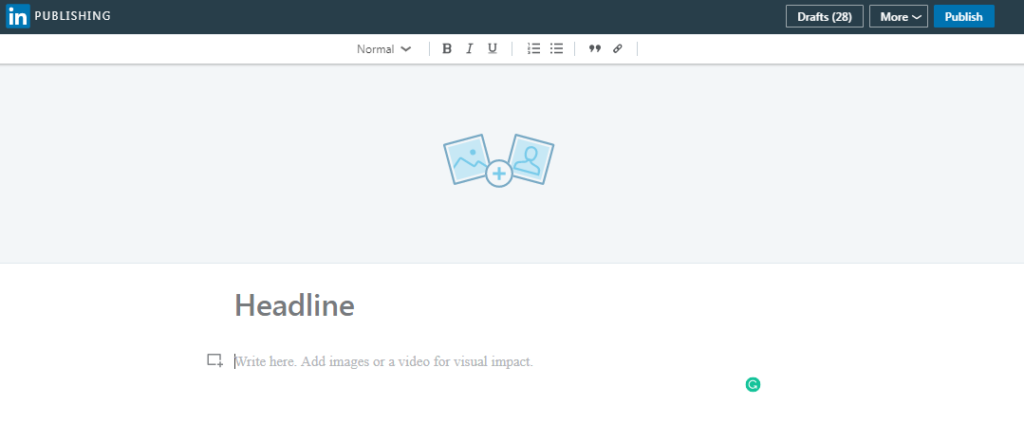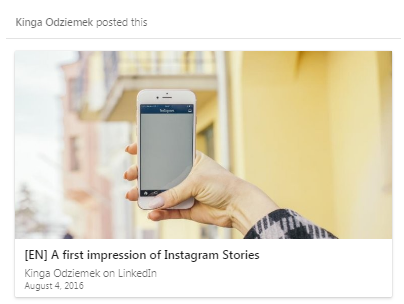LinkedIn is like Marmite – you either love it or you hate it, but the truth is – you can’t make up your mind without knowing the full potential and all the features of this platform. People tend to dislike something they don’t understand, so today we are going to go through all of the possibilities of the sea blue online giant with you.
If you would like to know what the secret ingredient of successful LinkedIn personal profiles is or how to post on LinkedIn, then this article is for you. However, first things first, get yourself a cup of coffee and then keep reading.

What is LinkedIn?
Long story short: LinkedIn is a social network for professionals. For some people, it plays the role of Facebook connected to a CV. This business platform is skyrocketing right now, attracting more people and engaging more professionals than ever before.
1 of every 3 professionals in the World is on LinkedIn.
Jason Miller @LinkedIn
LinkedIn personal profiles are in their full glory nowadays. Professionals rush to LinkedIn to either take care of their abandoned profiles or set up some new ones. Today, we are going to show you a few good practices you can apply to your profile right now.
How can LinkedIn help you?
Why is it worth being on LinkedIn? Well, there are quite a few reasons:
- LinkedIn wonderfully enhances personal brands and helps you showcase your experience, expertise and knowledge. As it is a professional network, you can count on a high level of discussions.
- LinkedIn works like your business card and CV in one. With many new features (e.g. finding people in your surroundings at events) it can play the role of an interactive CV. Bearing in mind that it showcases your experience, recommendations and endorsements, it can be taken as even more professional and serious than a paper card.
Well, it does not come as a surprise that recruiters increasingly more often ask only for a PDF generated from a LinkedIn profile as a CV. Recommendations often speak for themselves. - LinkedIn can help you land your dream job, find business mentors, hire an amazing person for your team or look for VC. Basically: you can find something you need at a specific time of your career.
- LinkedIn can also replace other media. If you’re wondering how to post an article on LinkedIn, check out LinkedIn Publishing. You can easily turn your LinkedIn profile into an expert blog (we cover it below). The platform is right there and does not require you to obtain some magical skills to set it up. With SlideShare, you do not have to upload your PDFs and presentations anywhere else.
The role of LinkedIn research
Before you start…
you need to do LinkedIn research. Without some basic analysis, even the best practices won’t be successful and will bring little or no results. You may ask: What should that LinkedIn research include? It consists of a few parts (and should be repeated & updated regularly):
- LinkedIn research of your competitors. Some industries can be really competitive in terms of people fighting for others’ attention on LinkedIn. Analyze profiles of your competitors. Find out what they highlight and write about the most. Go through their posts, comments and articles – any type of interaction can show you the way of their communication. You can either follow it (but not copy!) or avoid making their mistakes. Without this research, you won’t know whether they do it right or wrong.
How to research this on LinkedIn? Some of your competitors’ reps you may know by heart, others you can find by going to the LinkedIn Company Pages of your competitors and checking their list of employees. You should check those who hold the same job position as you first of all. Some of them may have great elevator pitches, others may have intriguing cover photos or experience described.
Speaking of Company Pages…
- LinkedIn research of the best Company Pages. You may think now: why should I even analyze it on a Company level? However, this kind of research can help you evaluate the way of communication on the line between competitors in general and their clients and employees. You can recognize connections in communicating some news or consistent strategy applied both for personal profiles and Company Pages.
- Research how to write successful LinkedIn articles. You’ve decided to start publishing? Amazing! Now you should get into not only how to post an article on LinkedIn, but also how to interact with your audience and what you should write about. There are a few tools – both internal within LinkedIn and external – that can help you write better, more accurately and drive the desired results. With Google Trends and Google Alerts you can identify some trending topics that may be worth covering in your articles (if you have enough expertise to write about it as an expert). Don’t write about things that you have no clue about, and learn how to post on LinkedIn first to avoid any technical bugs on the way.
You’ve done your homework? Now onto some good practices for your profile.
What should your profile have?
This is where our checklist may come in handy. We identified a few areas you should complete and activities you should take to make your profile shine bright like a diamond.
Let us repeat this: your profile is your business card.
Care about your profile, setting it up is the very first thing but making it worth a visit is a totally different story. If you don’t know where to start, our checklist can be of help.
Cover photo on LinkedIn:
Make it relevant to your company and its communication. An official cover photo of the company you work for is always a good idea, and sometimes it only needs a bit of adjusting.
Profile photo on LinkedIn:
Your profile picture says more than 1000 words. 21x more views, 36x more messages. That’s true – if you decided to upload your profile picture, your profile can be more successful and trustworthy to any potential clients, business partners or employers. Remember to keep your photo professional – that amazing selfie in the mirror should rather go on Instagram than here.
Headline on LinkedIn:
A headline can win your clients’ hearts over. Briefly describe how you can help and what your job role is, but you can also cover your competencies and qualifications as well as some company-related lines such as “We’re hiring!”. It may seem to be a single line only, but it can really impact whether someone clicks through your profile or not.
Elevator pitch on LinkedIn:
it is a quick presentation/showcase of your skills and expertise. You should be able to read it in 30 seconds max – this is the time span of an elevator ride. Simply: it needs to be short and sweet. If anyone wants to know more, they will definitely shoot you a message.
Experience on LinkedIn:
Job role titles may say something, but they won’t say it all. Apart from providing your job position, explain what your responsibilities are, what clients or projects you are working on (unless NDAs do not allow you to do so), what your successes were or are.
What is also important is to show the experience that really matters. There are some cases where listing all types of jobs you did in your life can be beneficial, but you should rather focus on these job roles that are relevant to your current position and experience.
Education on LinkedIn:
Just like experience, there is no need to cover it all here. You can definitely skip the primary school stage and focus on your higher studies or additional courses. You should add courses, qualifications and diplomas to your profile if you want to build some trust from day zero.
Endorsements on LinkedIn:
Giving endorsements on LinkedIn is very easy, however getting some can require some time. Ask your peers (those who worked with you and know your expertise) for endorsing you or endorse them first to somehow make them do it in return, but only if you are sure they have that set of skills. Don’t endorse random people just to get equally random endorsements.
Recommendations on LinkedIn:
Recommendations can play the role of your testimonials. As they are written by real people who can prove and recommend your skills, they can be incredibly convincing for those who consider collaborating with you. Getting even one recommendation can be time-consuming, but it pays off. Ask your colleagues, employers, clients or business partners for a few words of recommendation, they can easily put it on your profile for you to approve it. This part of a LinkedIn profile is often neglected, but in fact, it should be one of the very first things you do to build your recognition.
Communication on LinkedIn
Who should you connect with?
LinkedIn is not a collection of Pokemon: you don’t have to catch’em all. Thoughtfully look for connections that could be valuable for you for business reasons: potential business partners, clients, employees or employers, and influencers. Do not invite anyone just because they exist on LinkedIn. Social media, and this network, especially in the business point of view, is about value. If you are not sure whether you invited the right person to your network, ask yourself if they would benefit at all from the content you share, and if you have anything in common to be each other’s contacts. If the only common thing is the fact of having a LinkedIn account, then you may not be a match made in heaven.
Engage with others
You are not the only person on LinkedIn who would like to do something more on the platform! There are many extremely interesting people who share their knowledge and stories. Interact with them, make connections, learn how to post an article on LinkedIn and make the most of it – they can pay it back to you and engage with your content. Furthermore, there could be something else coming out of it, for example, a collaboration or a new contract. If you never try, you’ll never know.
Are LinkedIn groups worth it?
While LinkedIn groups may not yet work as well as Facebook Groups (for example ours: Pro tips&tricks for social media managers), they do have the potential to sparkle very soon. Without a doubt, LinkedIn is working on making it another way to build a community around a brand or topics.
What, when and how to post on LinkedIn?
You need to be active on LinkedIn. There is nothing wrong with publishing your achievements, prizes, interviews or updating your profile and telling the world about it if it is something important. You should keep your private photos for yourself, and something more personal can be shared on other social media platforms if you feel like it. Did you know you can share PDFs? You can! How to do it? Simply click on the document icon and upload your file.
Along with posting on your private profile, you should think about communication for your company. LinkedIn Company Pages offer a lot of features that you could use for effective communication and bonding with your potential followers. If you would like to know more about how to get into efficient LinkedIn Company Page management, this article can get you covered.

Use Kontentino to schedule your LinkedIn posts ahead of time.
How often should you post something on your LinkedIn profile? There is no golden rule here. Post as often as you want as long as it delivers value to your audience or showcases your company. Blowing your own trumpet is often overdone on LinkedIn and can result in putting off your audience.
However, posting updates is not the only way to post on LinkedIn. You can also publish articles there, using the LinkedIn publishing feature.


How to post an article on LinkedIn?
It is relatively easy to post on LinkedIn, however, not everyone knows how articles on LinkedIn work.
LinkedIn Publishing is the ex-LinkedIn Pulse, a platform within LinkedIn allowing you to publish your articles. It is a great way to showcase your expertise and knowledge as it is not only nicely displayed on LinkedIn, but also gets indexed in Google Search Results – at a relatively high position.
You can either publish a whole brand new post or make a kind of sneak peek with a link to your original publication. For example, you can take some key takeaways and publish them, and below just link to your blog post or e-book. This way, you don’t reveal all of the secrets of your publication but drive some interest to those who are not convinced yet.
Many people still, instead of learning how to post an article on LinkedIn, choose external solutions. While external blogs can be more customizable (on LinkedIn you have only a couple of fonts and a space for cover photo at your disposal), they do not drive a lot of engagement and interaction from day one.
On LinkedIn, if you already have some networks established, it can be easier to get first reactions, comments and shares below your articles. Also, LinkedIn Publishing is incredibly intuitive and doesn’t require any tech background to run it smoothly. Needless to say that it can score you extra points whenever you look for a job, seek business partners or want to sell your services.
When should you use this feature? Anytime you have something insightful to say and believe that your cover-up of this topic will drive added value to many people. Remember that publishing on LinkedIn means starting the discussion, too. You need to be prepared for additional questions regarding your article.
Linked In or Linked Out?
You don’t know how to post on LinkedIn yet? How to post an article on LinkedIn is nothing but a mystery for you? Don’t worry: everyone had to start there once. Your personal profile can be a great trampoline to a better career or getting more clients, you simply need to take a bit more care of it and water it like a plant with some content and expertise. Good luck and get linked in!




